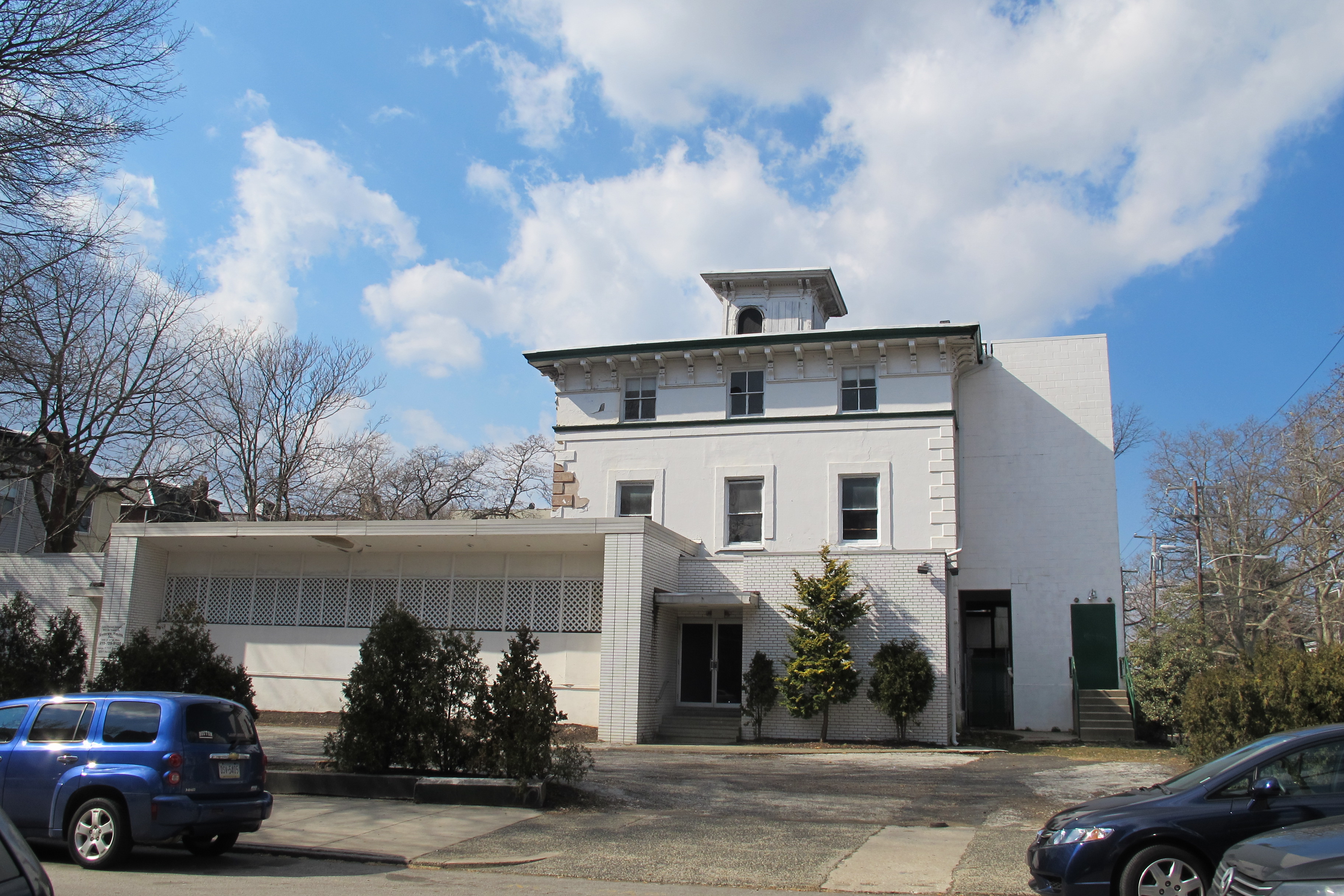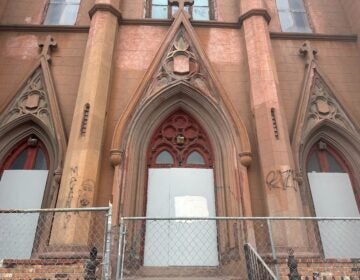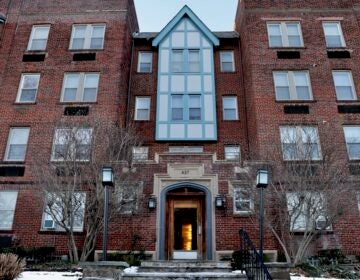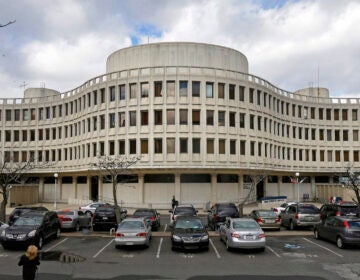Farnham justifies granting hardship in testimony at hearing on 40th & Pine property

Another full-day hearing at the Board of L&I Review on the proposed demolition of a historic property at 40th and Pine streets stopped without finishing on Monday. Attorneys for the City and for the University of Pennsylvania, which owns the building, called three witnesses: Jonathan Farnham, director of the Historical Commission; Margaret Sowell, a real estate consultant; and Paul Sehnert, director of real estate development for Penn.
The meeting, which began at 10 a.m., ended at 5 p.m. during the appellants’ cross-examination of Sehnert. Penn’s attorneys have at least one more witness to call at another hearing: Jonathan Weiss, developer of a proposed 5-story student-housing complex on the site. The next hearing has not yet been scheduled.
The case is being decided on whether the Historical Commission erred in granting to Penn a hardship for the property, which allows them to demolish the historic building.
In his testimony, Jon Farnham explained to the Board what constitutes a hardship under the terms of the city’s historic preservation ordinance. He said that applications for hardship must prove that sale of the property in question is “impracticable.” He also said that the hardship determination does not take into account the financial health of the owner—that the hardship test is “designed to remove the property owner from the equation.”
Farnham said the hardship test is intended to help the Commission decide whether or not a building can be “feasibly reused,” or “reasonably adapted.” He said that building a separate 7-story structure on the site of a historic building—which the developer had earlier proposed—does not constitute a “reasonable adaptation.”
“If the Commission could force a property owner to build a large building on a property to subsidize a historic building, there would never be a case of hardship,” Farnham said.
In response to questions about why the Historical Commission did not apply the terms of the separate hardship test for nonprofit owners, Farnham said that the nonprofit test gives the Commission more flexibility to grant hardships, but that hardship was justified for the property in question even under the stricter test for for-profit entities.
Farnham said that the impracticability of sale can be proven either through an actual attempt at sale or through a real estate analysis. Paul Boni, attorney for a group of residents appealing the Commission’s decision, took issue with that line of reasoning.
Boni quoted from the Commission’s Rules and Regulations: “To substantiate a claim of financial hardship to justify a demolition, the applicant must demonstrate that the sale of the property is impracticable, that commercial rental cannot provide a reasonable rate of return, and that other potential uses of the property are foreclosed. The applicant has an affirmative obligation in good faith to attempt the sale of the property, to seek tenants for it, and to explore potential reuses for it.”
Boni said the requirement of an attempt to sell is intended to provide a “real-life check” on the claim that sale is impracticable. Farnham said that even while Penn’s real estate analysis proved that the sale was impracticable, its attempts to offer a long-term lease of 45 years or more for the property is equivalent to an attempt of sale.
Boni asked Farnham whether it was possible that someone would have bought the building if it had actually been put up for sale on the open market. City solicitor Andrew Ross interjected.
“We would stipulate that anything is possible, including that,” Ross said.
Margaret Sowell, of Real Estate Strategies, Inc., performed an analysis of the building’s viability for the Historical Commission when it was considering Penn’s application for hardship in the spring. On Monday, she testified that simply rehabilitating the structure—built as a single-family home and later converted into a nursing home—would not make the property financially viable. She said that graduate student housing—Penn’s proposed use—is the highest and best use of the land considering its context, but added that the property would not be viable if converted into commercial or retail space.
Sowell, who said the Historical Commission did not discourage her firm from looking into any possibility for use of the site, said that the building’s condition and location limit its reuse possibilities. She said that while the building is in horrible disrepair, she was impressed by the level of security, having seen no graffiti inside the building on a tour she took earlier this year.
Paul Sehnert, Penn’s director of real estate development, provided an overview of the University’s history with the property in his testimony. He said that Penn bought the property “for the purposes of eliminating blight” in 2002, and that it has spent $25,000 to $35,000 a year since to secure and maintain the building. He said that the water pipes burst just before Penn purchased the property, and that the building is “not in habitable condition.” Acquiring the property, he said, was part of Penn’s “large-scale institutional advancement” and neighborhood revitalization.
Sehnert pointed out that Penn issued two solicitations of interest, asking for suggestions for how to use the property from local developers. He said the University had exhausted the possibilities for using the building for its own institutional purposes. Between 2003 and 2006, Sehnert said, Penn “continuously marketed” the property to developers. He said the long-term lease is essentially the same thing as a sale, and that it is treated the same for tax purposes. Through all those attempts, he said, Penn got only a few “serious” proposals for what he called “comprehensive, first-class development” projects that would also keep the existing structure. Both of those proposals were pursued and later abandoned by the selected developers, he said.
Also at issue was Penn’s assessment of what would constitute a “reasonable rate of return” on the property, which it bought for around $1.7 million. The owners have said the hardship is justified because they can’t net a 7 percent capitalization rate or 11 percent “cash on cash” return while keeping the existing building.
Sehnert said that Penn believes rehabbing the building still would be a hardship even if a developer were able to acquire it for free.
The next hearing will begin with Paul Boni continuing his cross-examination of Sehnert. PlanPhilly will update this story when the hearing is scheduled.
Contact the reporter at jbrey@planphilly.com and follow him on Twitter @jaredbrey
WHYY is your source for fact-based, in-depth journalism and information. As a nonprofit organization, we rely on financial support from readers like you. Please give today.






